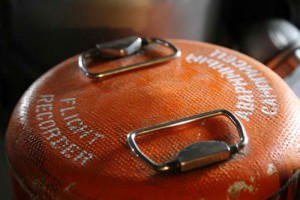 WASHINGTON – For nearly five years, government and industry officials have been exploring ways to make it easier to find airliners and their critical “black boxes” that end up in the ocean. But their efforts are too late to help in the case of a Malaysia Airlines jet that disappeared over the weekend.
WASHINGTON – For nearly five years, government and industry officials have been exploring ways to make it easier to find airliners and their critical “black boxes” that end up in the ocean. But their efforts are too late to help in the case of a Malaysia Airlines jet that disappeared over the weekend.
The efforts were spurred primarily by the search for Air France Flight 447, which disappeared over the Atlantic Ocean en route from Rio de Janeiro to Paris on June 1, 2009. It was nearly two years later before the main wreckage of the Airbus A330 and its black boxes – it data and cockpit voice recorders – were found about 13,000 feet below the ocean’s surface.
“I think at the time a lot of people were looking at Air France 447 as unique,” William Waldock, who teaches accident investigation at the Embry-Riddle Aeronautical University in Prescott, Ariz. “We really had not had one like that where it takes so long to find it.”
Since then, the International Civil Aviation Organization (ICAO), a U.N. agency, has issued new standards requiring signals from underwater locator beacons on black boxes on all airliners to last at least 90 days instead of the current 30. But those requirements aren’t effective until 2018.
ICAO has also issued new standards effective in 2018 requiring underwater locator beacons be attached to the aircraft fuselage to help searchers find wreckage. ICAO’s standards are not binding, but are followed by most nations.
Three months ago, the Federal Aviation Administration requested that a technical advisory panel explore ways to strengthen requirements for aircraft emergency locator transmitters. Transmitters, which relay location by satellite, only work above the water’s surface. The panel began a three-day meeting in Washington on Monday on the issue, but that effort is just getting started.
Another idea that has been discussed is whether airliners should also have transmitters that automatically detach and float to the surface, which would enable them to continue sending signals after a plane plunges into the water, according to a National Transportation Safety Board briefing Tuesday.
The U.S. Navy has had such floating transmitters on its planes for about 15 years, Waldock said.
“It boils down to expense as much as anything,” he said. “These systems are pricey.”
None of these efforts have helped find a Malaysia Airlines Boeing 777, which disappeared with 239 people on board en route from Kuala Lumpur to Beijing on March 8.
Data recorders typically record over a 24-hour period at least hundreds of types of information about how a plane is functioning. Investigators count on that information for clues to the cause of an accident, including how the engines are working, the pilots’ actions, the status of key systems like the autopilot and autothrottle, and the position of wing flaps and rudder.
The cockpit voice recorders contain pilots’ conversations and any sounds inside the cockpit in a continuous two-hour loop.
Both are equipped with underwater locator beacons powered by a tiny radioactive pellet that continually sends out sonic signals for a minimum of 30 days. Even with a functioning beacon, the signal can only be heard underwater with special equipment and can diminish depending upon the ocean depth, water currents and whether the boxes are buried in silt or sand.
There have been discussions about requiring boxes also be made so that they float, the board said.
Some newer airliners already stream much of the same information recorded by black boxes back to their home base via satellite during flight. Airlines do this primarily so that they know whether there are any problems with the plane that require maintenance or repairs. If they get the information while the plane is still in-flight, they can have mechanics and parts in place when it lands, saving time and money.
But if planes also streamed back information like altitude, airspeed and heading, it could provide critical clues to searchers in the event of a crash. However, if all the thousands of airliners that are in the air in the U.S. everyday were all streaming large amounts of data at the same time, there wouldn’t be enough bandwith to transmit the data or enough capability to record it on the ground, Waldock said.